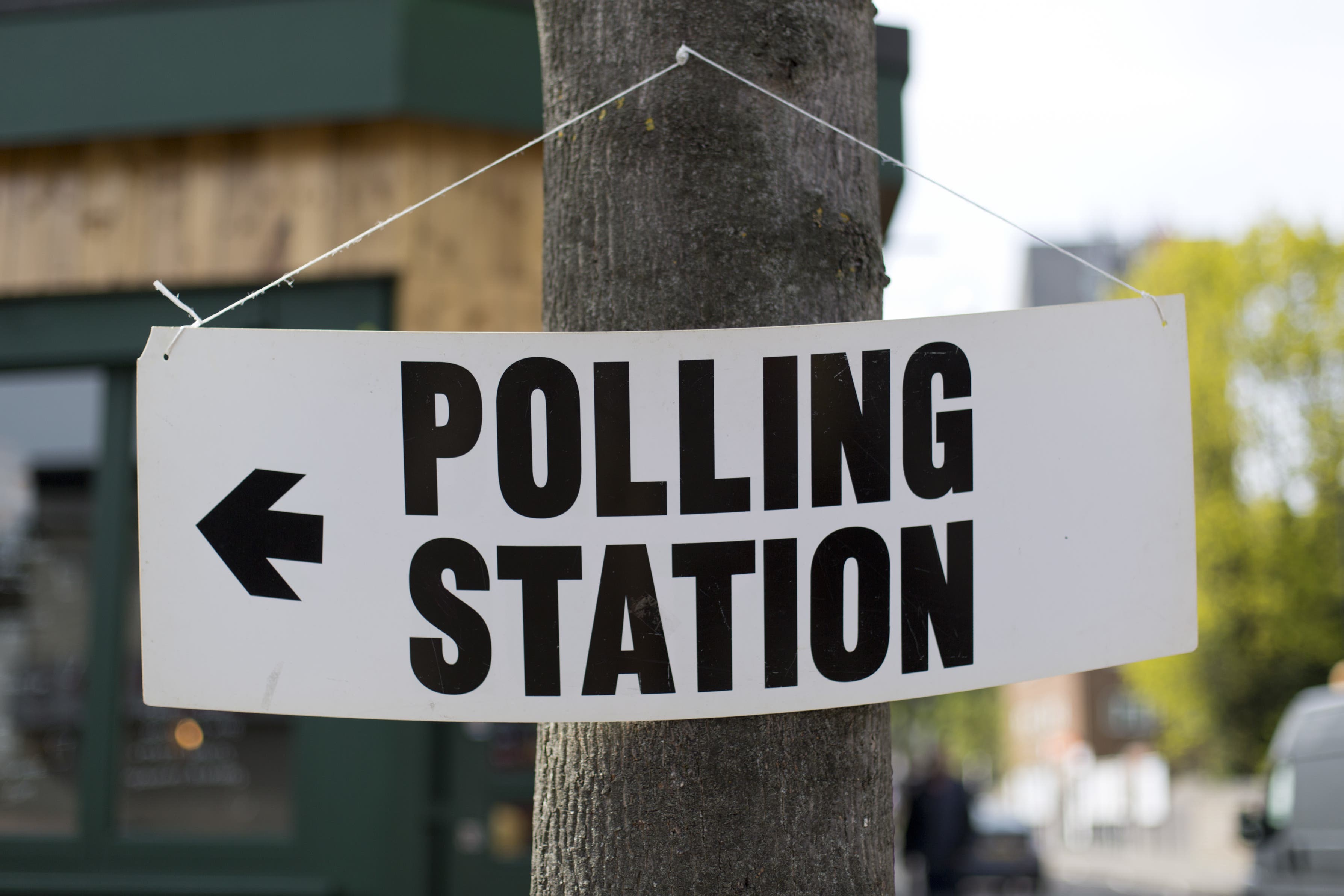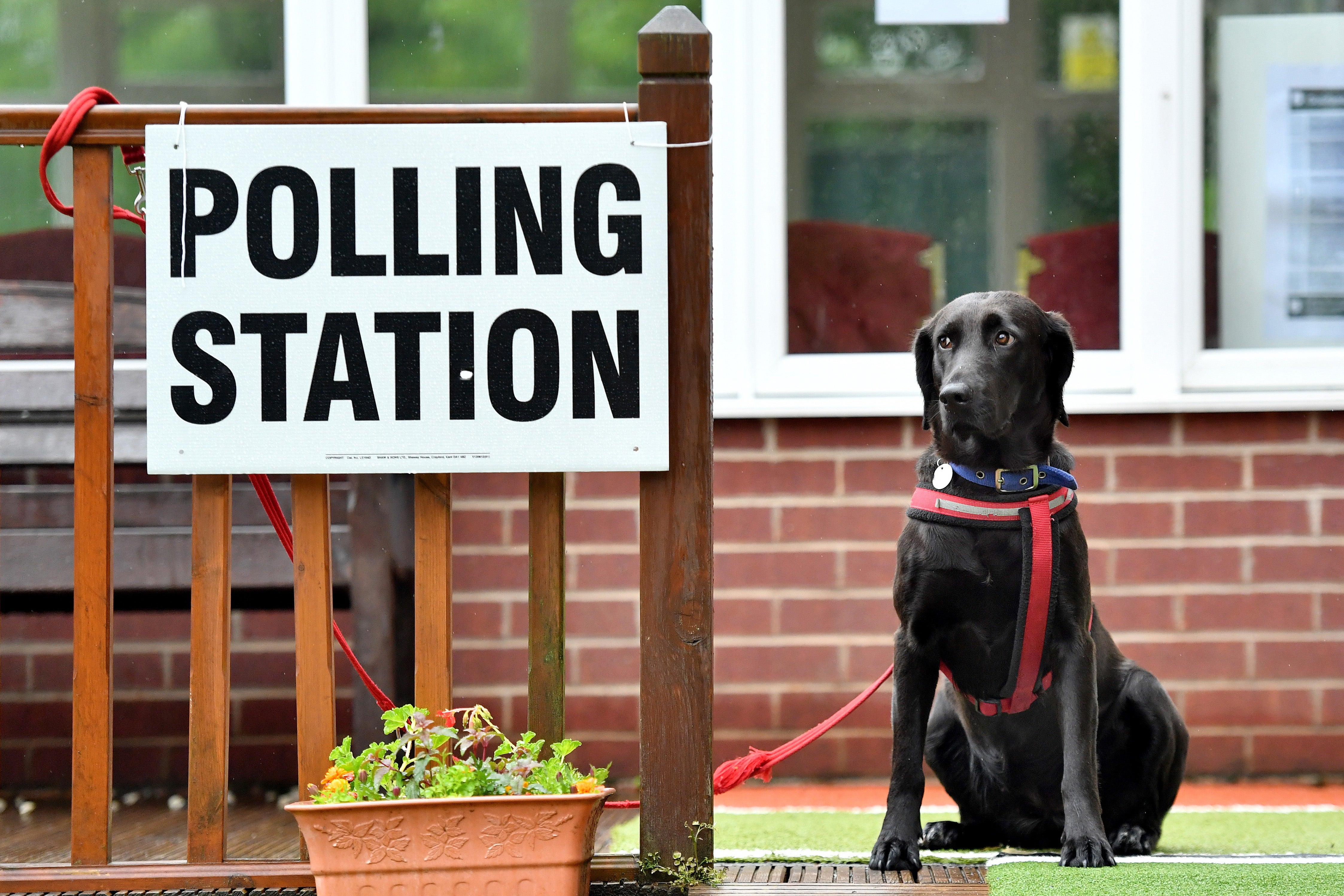How to vote in the General Election: Finding a polling station and can I take my dog?
Here’s everything you need to know about voting in the general election

Your support helps us to tell the story
From reproductive rights to climate change to Big Tech, The Independent is on the ground when the story is developing. Whether it's investigating the financials of Elon Musk's pro-Trump PAC or producing our latest documentary, 'The A Word', which shines a light on the American women fighting for reproductive rights, we know how important it is to parse out the facts from the messaging.
At such a critical moment in US history, we need reporters on the ground. Your donation allows us to keep sending journalists to speak to both sides of the story.
The Independent is trusted by Americans across the entire political spectrum. And unlike many other quality news outlets, we choose not to lock Americans out of our reporting and analysis with paywalls. We believe quality journalism should be available to everyone, paid for by those who can afford it.
Your support makes all the difference.Voters in the UK will visit polling stations up and down the country on July 4 to have their say in which political party they want to represent their area and country.
Prime minister Rishi Sunak announced the snap general election at the end of May, sparking six frantic weeks of political campaigning. June has seen leaders, candidates and activists fight for every last vote: knocking on doors, taking part in televised debates, and trying to avoid controversy.
Polling suggests the election will mark the end of 14 years of Conservative governance, with Labour flying ahead in projected voting intention. Some also predict smaller parties like the Lib Dems, Greens and Nigel Farage’s Reform UK could pick up record seats.

The true picture will remain unclear until July 5, when the UK will wake up to a new administration. Before that, the electorate must take to their local polling stations to cast their votes (if they have not done so already via a postal vote).
To ensure everyone gets a fair and equal chance to participate in this democratic process, there are a number of rules in place which must be followed in and around polling stations.
Here’s everything you need to know about polling day.
Where is my polling station and when does it open?
After registering to vote, you should be sent your polling card, which will tell you where your local polling station is. This is the only one you can visit on polling day, as staff there will carry your details. You do not need to take this document with you to vote.
If you have not received your polling card, the Electoral Commission – which oversees UK elections – offers a service to check where yours will be by postcode.
All polling stations open at 7am and close at 10pm. If you are queuing up to vote before 10pm and it goes past this time, polling station staff must still allow you to place your vote.
Filling out your ballot
To fill out your ballot, you need to put a single ‘X’ in the box to the right of the candidate you want to vote for. You will then fold your ballot in half and put it in the clearly marked ballot box nearby.
If you put more than one mark, write anything on your ballot, leave it blank or otherwise stray too far from the intended method of filling it in, it will be considered a spoilt ballot and not counted towards any candidate.
It is best not to put a tick or any other mark, as count assistants – who need to work very fast – may read this as a spoilt ballot. If you make a mistake, you should ask the polling station staff for a replacement, rather than trying to correct it.
You can use either the pencil provided, or use your own pen or pencil if you wish. Pens are generally not provided due to the possibility of the ink smudging.
Remembering your voter ID
This will be the first UK general election where ID is required to vote, after new laws came into place in 2022. This means you must bring an accepted for of photographic identification to be permitted to cast your ballot.
Accepted forms of ID include:
- Passport issued by the UK, any of the Channel Islands, the Isle of Man, a British Overseas Territory, an EEA state, or a Commonwealth country
- A photo driving licence issued by the UK, any of the Channel Islands, the Isle of Man, or an EEA state (including a provisional driving licence)
- A Blue Badge
- Older Person’s Bus Pass
- Disabled Person’s Bus Pass
- Freedom Pass
- Identity card bearing the Proof of Age Standards Scheme hologram (a PASS card)
- Biometric immigration document
- Ministry of Defence Form 90 (Defence Identity Card)
- National identity card issued by an EEA state
- Anonymous Elector’s Document
For more information, The Independent has prepared a handy guide to voter ID.
Taking your postal vote to the polling station
If you’ve applied for a postal vote, but it’s either arrived too late or you’ve not managed to post it in time: fear not. You are able to take your postal vote to the polling station by no later than 10pm on polling day and it will still be counted.
You are also able to ask a trusted person to take it in for you, if you can’t make it to the station yourself on the day.
Bringing dogs (or other pets) to the polling station
You can bring your dog to the polling station. For some, it’s a tradition. It’s up to the discretion of the station staff, but in most cases they will ask that dogs (or other pets) be tied up outside.

The exception is assistance dogs, which are always permitted.
Talking to other voters
When it comes to chatting with other voters inside the polling station, there’s just one rule. Conversation is perfectly welcome, so long as you don’t engage in political discussion.
This is because such chat could be considered political campaigning, which is strictly forbidden inside polling stations. Instead, try the weather, pets, or holiday plans (provided your fellow voter is happy to engage).
Taking selfies at the polling station
If you want to let all your friends and/or followers know that you’ve voted on July 4, a selfie is a great way to do it – but be wary.
While you are allowed to take pictures (including selfies) outside the polling station, you must not take any inside. The Electoral Commission – which oversees UK elections – says this is because it risks the secrecy of the ballot.
If you reveal how someone else voted, even by accident, you could be hit with a £5,000 fine or six months in prison. Best not to risk it.
Bringing children with you to vote
Parents are very welcome to bring their children with them to polling stations and can bring them inside.
Children are allowed to accompany their parents at all times in the station, or can wait in a safe place if preferable. But they must not mark a ballot paper themselves.
Join our commenting forum
Join thought-provoking conversations, follow other Independent readers and see their replies
Comments